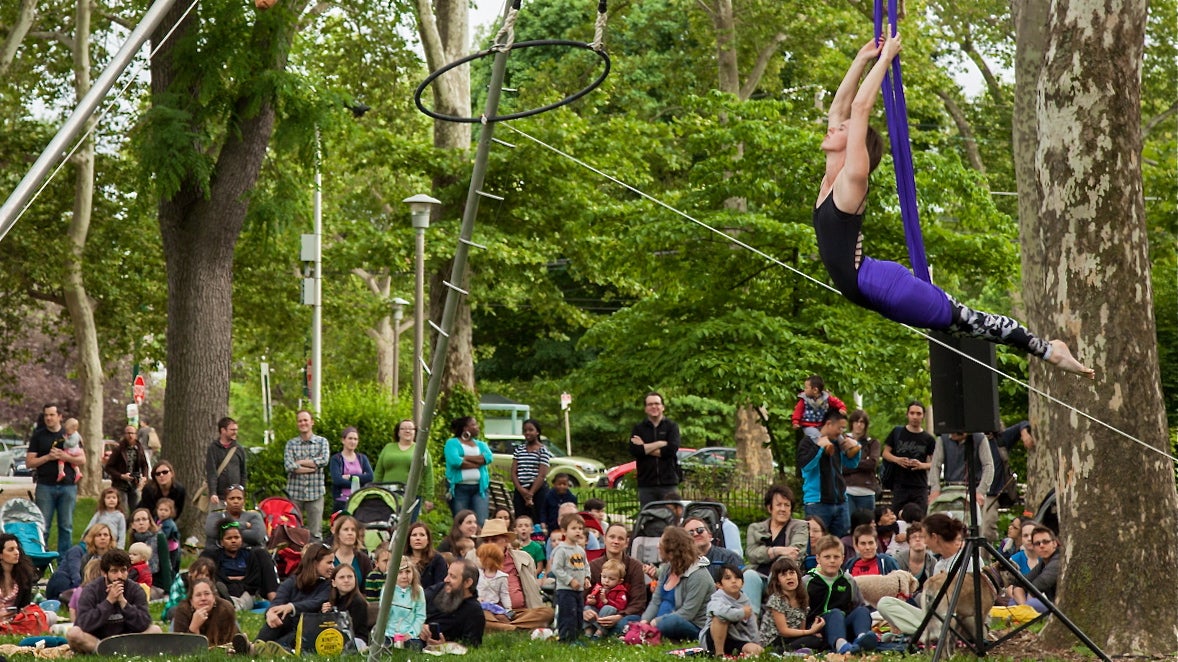Philly arts community contemplates possible elimination of NEA
Listen
Tangle Movement Arts stages a performance in Clark Park as part of Philadelphia's Performances in Public Spaces program, funded by the National Endowment for the Arts. (Emily Cohen for NewsWorks/file)
Over the weekend, Washington, D.C., newspaper The Hill reported that the Trump transition team is considering eliminating the National Endowment for the Arts, the National Endowment for the Humanities, and the Corporation for Public Broadcasting, in an effort to trim 10 trillions of dollars out of the federal budget in the next 10 years
What would elimination of the NEA mean for Philadelphia?
The federal agencies provide a small part of the overall local arts funding. The NEA, for example, gave a little more than a million dollars to organizations in Pennsylvania last year. The lion’s share — about $700,000 — went to the Philadelphia region.
According to the Greater Philadelphia Cultural Alliance, Philadelphia has a $3.3 billion arts sector.
One of those recipients of the last round of NEA funding is the performance venue Painted Bride, which got $45,000 to collaborate with Drexel University in bringing together artists and teenage victims of violence to create a staged performance. Healing Arts through Replicable Practice (HARP) is meant to identify and address physical, emotional, and social needs of the kids through the creation of dance, theater, and spoken word poetry.
The money came from a new initiative from the NEA — Creativeity Connects — which funds collaborations between the arts sector and other economic sectors, such as health, crime, and agriculture.
“I think that’s the place where we’re going to come up with new solutions for problems in our world,” said Laurel Razka, Painted Bride director. “I feel we’re stuck in our own sectors, and this cross-collaboration is going to spark new ideas and creativities.”
That $45,000 grant is a matching grant, for which Raczka has to raise an equal amount from other sources.
Maud Lyon, president of the Cultural Alliance, says because the NEA, NEH, and CPB are federal agencies, their funding comes with more value than just the dollar amount.
“Particularly to smaller organizations, if you get an NEA grant, that allows you to go to foundations and individual donors and you have a stamp of approval that is really helpful in leveraging other funding,” said Lyon.
The Trump administration is not expected to release a budget proposal until April. Lyon says she is taking reports of de-funding arts and culture seriously, but not literally. Not yet.
WHYY is your source for fact-based, in-depth journalism and information. As a nonprofit organization, we rely on financial support from readers like you. Please give today.





